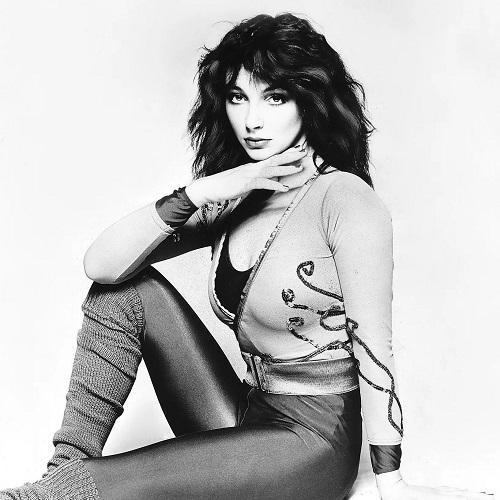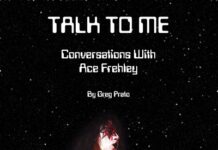By Ira Kantor
Will Stranger Things ensure Kate Bush’s future enshrinement into the Rock & Roll Hall of Fame?
Months ago, this question didn’t exist. Then word came that the hit Netflix drama was going to make prominent use of Bush’s seminal 1985 track “Running Up That Hill (A Deal With God)” during its fourth season.
Bush, already a three-time RRHOF nominee, doesn’t necessarily need this commercial nudge given her collective body of art over 45 years. But it certainly doesn’t hurt — especially with the original track nestling atop the UK singles chart and hitting top five in the states back in June.
Spoiler alert, this isn’t the first time the same Kate Bush track has permeated popular television. FX’s Pose took that honor back in 2018.
In an era dominated by TikTok, social influencers, and Gen Z artistic wakeups, we may soon be seeing Bush’s vixen face adorning T-shirts at Newbury Comics or Spencer’s Gifts throughout the land. But let me use this opportunity to express the following: I don’t need a television program to convince me of how amazing Kate Bush is. Hell, I devoted the first chapter of my collegiate English honors thesis to her first big hit “Wuthering Heights” back in 2006! Fact: this song, which distills the gist of Emily Bronte’s novel of the same name, was composed when Bush was just 18.
A while back, I asked Irish musician Gemma Hayes, who notably covered Bush’s 1985 track “Cloudbusting” back in 2009, about her Kate Bush fandom. She replied: “I’ve loved Kate Bush from the moment I heard ‘Wuthering Heights’ and watched her usual mesmerizing dancing in its video. I had never seen or heard anyone like her. Such a unique and incredibly important artist. As a writer, she chose such left-of-field stories, an abstract perspective on love, and acute observations on the follies and frailties of the human condition — as well as its beauty and strength.”
And perhaps the most accurate line of them all: “She is utterly unique. Her music to this day is fresh and relevant as ever before.”
Therefore, it’s my hope that this Stranger Things situation isn’t a bandwagon but rather an about-time, need-to-happen movement.
Kate Bush isn’t a commercial superstar because she intentionally courted the limelight with a predetermined precociousness no one could manipulate. In the entirety of her career, she has done only two tours with a set number of shows for each. No two albums of hers are alike. If one had more of a commercial appeal, the next would offer standout tricks and traipses to throw you off. She’s always left her fans wanting more.
Bush is also arguably one of music television’s most beautiful presences. However, her Puck-like demeanor on screen is equal parts seductive and leonine; you get too close and you wonder if she’ll snatch you up in her jaws. But then there’s her maternal take in Peter Gabriel’s “Don’t Give Up” video … which persona best encapsulates who she is as an individual?
By the way, I’m not saying that “Running Up That Hill” isn’t a terrific song. It is. When my wife, Jen, came into my office to first alert me to the song’s apparent second life, I immediately fired up Bush’s performance of the track with Pink Floyd’s David Gilmour (her first major musical benefactor and supporter) at The Secret Policeman’s Third Ball from 1987 — all with a tremendous grin on my face. Had the Floyd “wall” of ’79-‘80 been anchored behind them, Bush would have made it collapse with her power and assuredness on stage — a fiery Joan of Arc in dangling earrings and lush curls.
Last year was “We Don’t Talk About Bruno.” This year must be “We Need To Talk About Kate Bush.” And believe me, I have. Work colleagues stateside and EU-based; my family; Chatter groups ─ all that’s missing are the accompanying pamphlets to hand out.
But while we’re caught up in the global impacts of “Running Up That Hill,” now is an ample time to highlight some of the other landmark recordings from Bush’s storied career. These may not carry the same commercial weight but they are, at the very least, must listens, especially given that a few would work well in tandem with the themes of Stranger Things from a lyrical and stylistic point of view. My hope is these resume notches will prove a perfect complement for the RRHOF powers that be when they see fit to induct Bush in 2023:
“The Man With The Child In His Eyes” (1978)
Where “Wuthering Heights” is more forceful in its execution, this follow-up from Bush’s debut album The Kick Inside is more balletic and sweeter, swapping out drums for classical instrumentation and gorgeous piano chords. Like its video, there’s an embryonic feel to the track that culminates in Bush bursting herself out into the world.
“Wow” (1978)
Here, Bush isn’t afraid to test the limits of her voice as mandolins strain to hit their highest registers. In under four minutes, she encompasses womanhood and the playfulness of a child, making for a one-of-a-kind musical frolic.
“Babooshka” (1980)
This track demonstrates the virtuosity of Bush’s storytelling. From the first lyric alone, “She wanted to test her husband; she knew exactly what to do — a pseudonym to fool him,” you’ll find yourself headed into a devilish rabbit hole with unexpected consequences. Without major music video effects, Bush stuns instead with a veil, an upright bass, a skintight leotard, and a costume that can easily make Wonder Woman blush.
“Breathing” (1980)
Metaphysical in its lyricism; ECM-worthy in its musicality, this is a sign of the wonderous experimentation that’s to come with Bush’s subsequent album
“Get Out Of My House” (1982)
The last track from Bush’s fourth album The Dreaming, this song is said to be inspired by Stephen King (and Stanley Kubrick’s) The Shining. This should be the next track Stranger Things looks at closely. With gated drums and the lumbering bass of Rainbow and Dio’s Jimmy Bain, this is one of Bush’s harsher tracks, as she manipulates her voice to simultaneously embody warning, pleading, fear, and abject terror.
“Cloudbusting” (1985)
“Running Up That Hill” is the springboard to what makes Bush’s 1985 album Hounds of Love spectacular. Yet it’s “Cloudbusting,” based on real-life experiences from psychiatrist and philosopher Wilhelm Reich and his son Peter, that makes the album eternal. Built around the dichotomy of militant drums (a sign of what’s to come) and romantic string ostinatos, the song outlines what can be accomplished when adversaries and obstacles alike make themselves present. By the time Bush reaches the exultant and bittersweet lyric of “We’re cloudbusting, Daddy!” your smiles and tears will rightfully mingle together.
Adds Gemma Hayes: “I remember the first time I heard “Cloudbusting” as a child. It moved me and I didn’t know why. The lyrics were beyond my grasp as a 9-year-old girl, but I was moved by the emotion in her voice, the strings, the constant beat. It was so progressive musically and thematically for its time. “Cloudbusting” in my view is such an important song for those reasons. I find it so easy to become totally immersed in the world of the song as I sing it. Time and place cease to be while I sing this song. As an artist this is what I continually strive for in my own work. To be lost within the song.”
“This Woman’s Work” (1989)
Closing her first US gold album, 1989’s The Sensual World, Bush sublimely encapsulates the fragility of human relationships and where fate proves cruel on this evocative track. As her voice walks a tightrope of vulnerability and builds to a harrowing crescendo, you realize this is the same as Dave Egger’s brilliant term: a heartbreaking work of staggering genius.
“Top of the City” (1993)
An immense work of musical rise and fall, exemplified by perhaps Bush’s greatest opening lyric: “One more step to the top of the city. We’re just a couple of pigeons living up on the angel’s shoulders…”
“Aerial” (2005)
After a 12-year absence between albums, Bush would return in 2005 with the two-part Aerial. The final track is intense, cathartic, and the closest she has ever come to recording an openly danceable song. Driven largely by her repeated exclamations of “I want to be up on the roof,” this is the kind of track where if you listen to it in the dark, you’re sure to see stars moving on your ceiling.
“Snowed In At Wheeler Street” (2011)
A somber reflection of a relationship that dissipates and reforms at crucial moments in time, Bush shares her vocals with none other than Elton John, who takes the task of singing alongside her quite seriously. There’s nothing camp or stereotypical about his performance; instead, he follows Bush’s artistic example and you become enraptured by this eight-minute tale. In Bush bringing out Elton’s greatness, we’re rewarded with his strongest vocal performance in years.




















